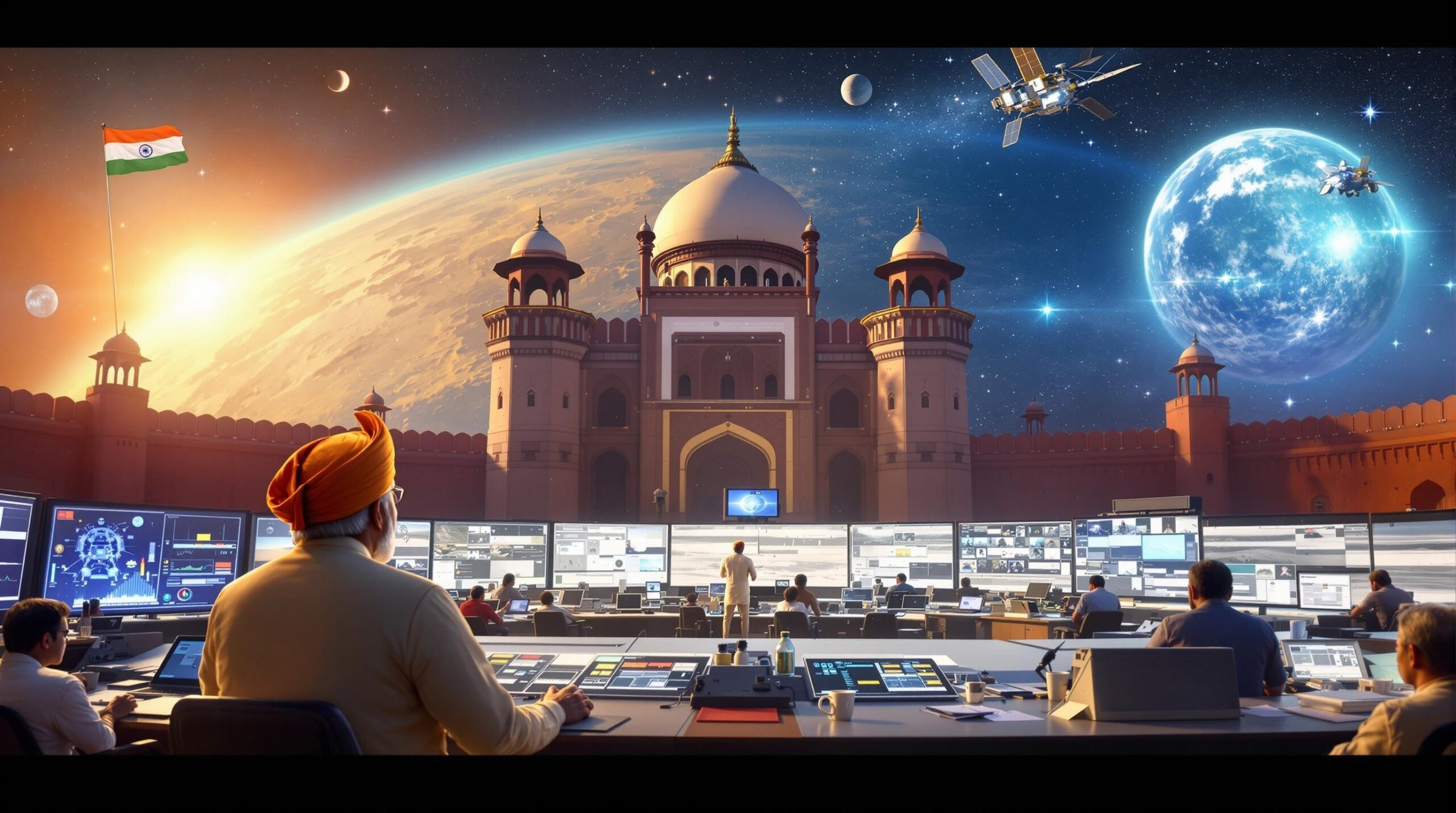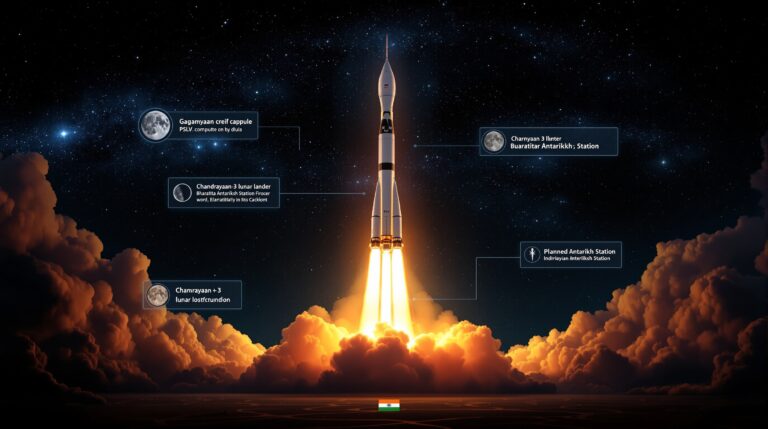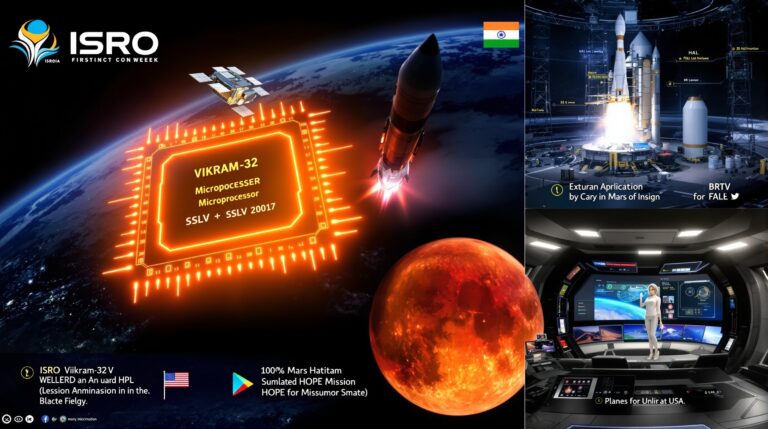Latest ISRO News Today: PM Modi Unveils Bold Space Ambitions on India’s 79th Independence Day
Introduction
ISRO news today-
India celebrates its 79th Independence Day on August 15, 2025, with renewed vigor in the space sector.
Prime Minister Narendra Modi delivers an inspiring address from the Red Fort, emphasizing India’s journey toward self-reliance in space exploration.
He announces ambitious goals, including the establishment of India’s own space station by 2035 and the first crewed mission by 2027.
These declarations come amid ongoing reforms and highlight the pivotal role of the Indian Space Research Organisation (ISRO).
For beginners eager to understand ISRO’s contributions, this article breaks down the latest developments in simple terms, explaining key concepts and their significance.
ISRO, India’s premier space agency, drives these initiatives forward.
Founded in 1969, ISRO focuses on developing space technology for national development, from satellite launches to planetary missions.
Today’s news centers on PM Modi’s speech, ISRO Chief’s responses, and recent milestones like the NISAR mission.
We explore these updates, providing context for newcomers while linking to reliable sources for deeper dives.
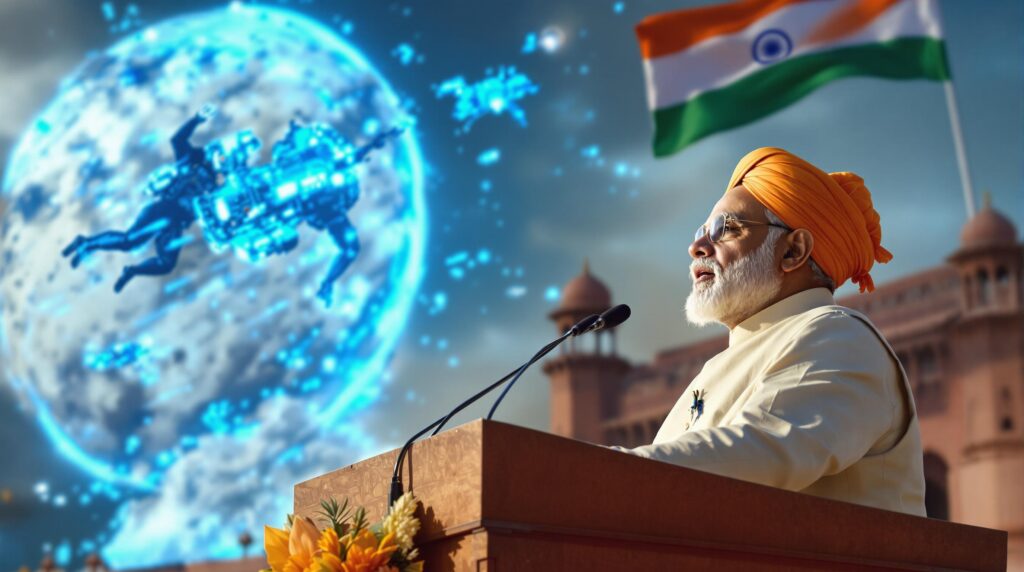
PM Modi’s Vision: India Aims for Space Self-Reliance
Prime Minister Narendra Modi takes center stage during the Independence Day celebrations, outlining India’s space odyssey.
He declares that India works tirelessly toward building its own space station, a monumental step that will allow Indian astronauts to conduct long-term research in orbit.
This station, targeted for completion by 2035, represents India’s leap from being a space follower to a leader.
Modi also reveals plans for the first crewed mission by 2027 under the Gaganyaan program. Gaganyaan, which means “sky vehicle” in Sanskrit, will send Indian astronauts into space aboard an indigenous spacecraft.
For beginners, think of this as India’s version of NASA’s Apollo missions – a human spaceflight program that tests our capabilities in low-Earth orbit. The PM stresses ongoing reforms in the space sector, including opening doors for private companies to collaborate with ISRO.
These changes aim to boost innovation and increase India’s share in the global space market from the current 2% to 8-10%.
External Link: Read the full text of PM Modi’s Independence Day speech on the official Government of India website here.
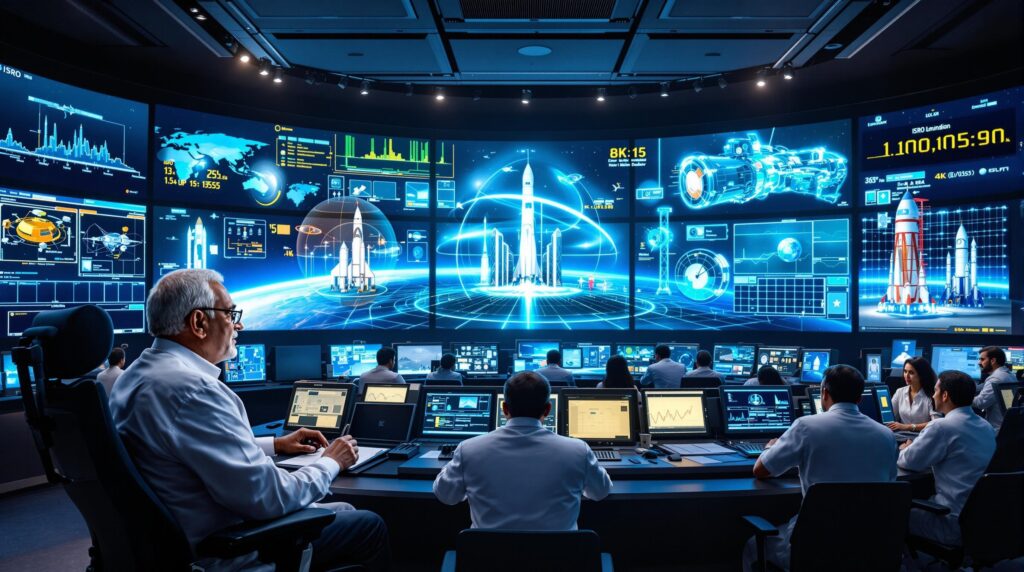
ISRO Chief Dr. V. Narayanan Responds: Roadmap to the Stars
ISRO Chairman Dr. V. Narayanan echoes the PM’s enthusiasm in an exclusive interview.
He outlines India’s big plans, confirming the space station timeline and the 2027 crewed mission.
Narayanan highlights how ISRO prepares for these through the Gaganyaan project, which includes uncrewed test flights and astronaut training.
For those new to space terms, a space station is like a floating laboratory in space where scientists live and work for months. India’s Bharatiya Antariksh Station (BAS) will focus on microgravity experiments, benefiting fields like medicine and materials science.
Narayanan also mentions upcoming missions to the Moon, Mars, and Venus, building on past successes.
He notes India’s aim to conduct multiple lunar landings and sample returns from the Moon. Mars missions could involve orbiters and rovers to study the red planet’s atmosphere and potential for life.
Venus, often called Earth’s twin, will see probes analyzing its thick clouds and surface heat.
These planetary explorations use ISRO’s reliable launch vehicles like the Polar Satellite Launch Vehicle (PSLV) and Geosynchronous Satellite Launch Vehicle (GSLV).
External Link: Watch ISRO Chief’s interview on YouTube for more details here.
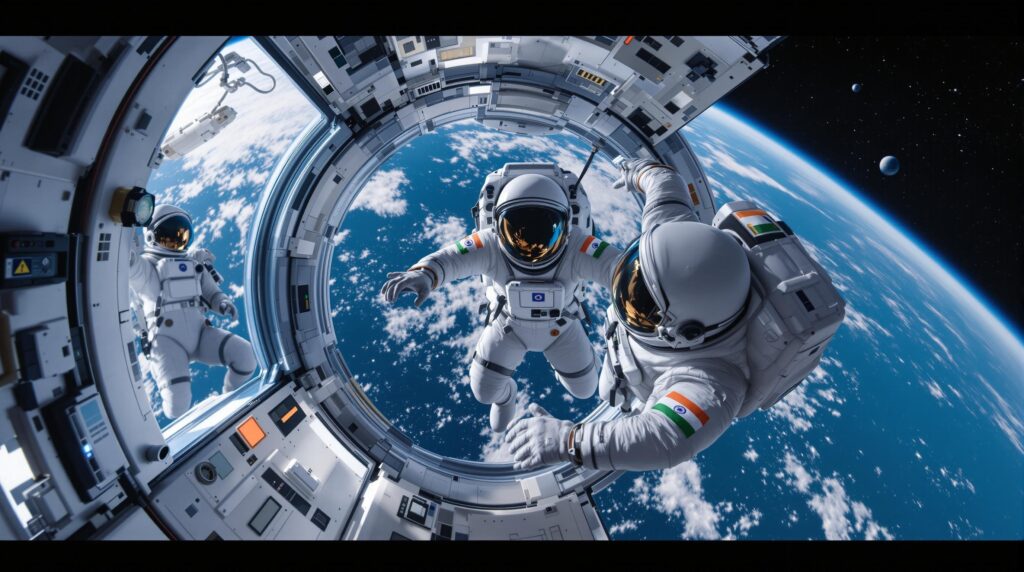
Recent Achievements: NISAR Mission and Beyond
ISRO achieves a major milestone just weeks ago with the launch of the NASA-ISRO Synthetic Aperture Radar (NISAR) mission on July 30, 2025.
Launched via GSLV-F16, NISAR is a collaborative Earth-observing satellite that maps the planet’s surface every 12 days. It helps monitor climate change, natural disasters, and ecosystems – crucial for beginners to grasp how space tech aids everyday life, like predicting floods or tracking deforestation.
Earlier in the year, ISRO launched EOS-09 on May 18, 2025, an Earth observation satellite enhancing remote sensing capabilities.
In January, NVS-02 bolstered India’s navigation system, similar to GPS but homegrown under the NavIC program. These successes follow the historic Chandrayaan-3 lunar landing in 2023, where India became the first nation to land near the Moon’s south pole.
ISRO also celebrates the Aditya-L1 solar mission, launched in 2023, which studies the Sun from a vantage point called Lagrange Point 1. This helps predict solar storms that could disrupt satellites and power grids on Earth.
External Link: Visit ISRO’s official website for mission details and updates here.
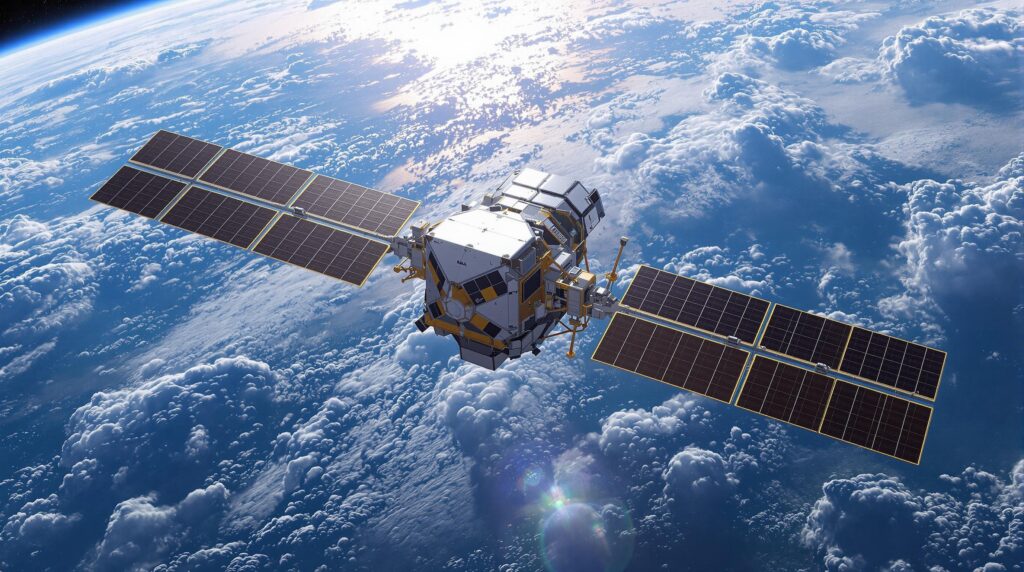
Historical Context: From Humble Beginnings to Global Recognition
To appreciate today’s news, beginners should know ISRO’s roots.
Starting with simple rocket experiments in the 1960s, ISRO launched its first satellite, Aryabhata, in 1975.
Over decades, it developed cost-effective technologies, earning praise for missions like Mangalyaan (Mars Orbiter Mission) in 2014 – the cheapest Mars mission ever at $74 million.
Key achievements include:
- Chandrayaan-1 (2008): Discovered water on the Moon.
- Chandrayaan-2 (2019): Orbited the Moon despite a lander setback.
- Chandrayaan-3 (2023): Successful soft landing and rover deployment.
- Gaganyaan Preparations: Astronauts trained in Russia and India for human spaceflight.
These feats not only boost national pride but also support agriculture, disaster management, and communication through satellites like INSAT and IRS series.
External Link: Explore ISRO’s timeline on The New Indian Express here.
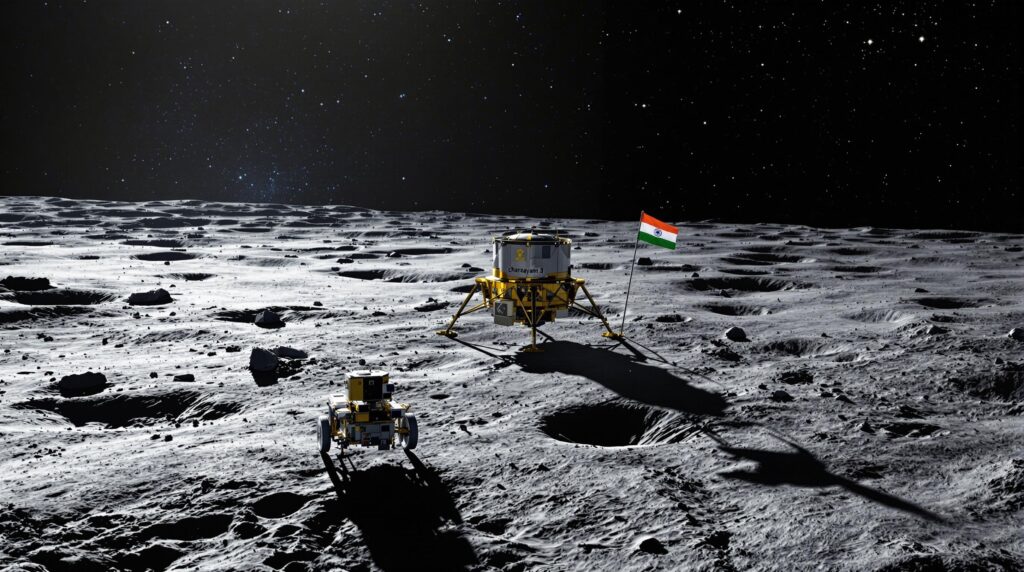
Future Horizons: Missions to Moon, Mars, and Venus
Looking ahead, ISRO plans a series of exciting missions. The Chandrayaan-4 mission, slated for the late 2020s, aims to return lunar samples to Earth. This involves complex robotics and will deepen our understanding of the Moon’s origins.
For Mars, ISRO eyes Mangalyaan-2 with a lander and rover to explore the surface. Venus missions, like Shukrayaan-1, will launch an orbiter to study the planet’s geology and atmosphere, helping unravel why Venus turned into a greenhouse runaway while Earth thrives.
These interplanetary ventures use advanced propulsion and AI, making space accessible and affordable.
ISRO also collaborates internationally, as seen in NISAR with NASA, fostering global knowledge sharing.
External Link: Learn more about upcoming ISRO launches on RocketLaunch.Live here.
Challenges and Opportunities in India’s Space Sector
While celebrations abound, ISRO faces challenges like budget constraints and technological hurdles.
However, private players like Skyroot Aerospace, which recently tested its KALAM 1200 rocket motor, add momentum. ISRO supports these through IN-SPACe, promoting startups in satellite building and launches.
For beginners, this means more jobs in STEM fields and practical applications like better weather forecasting.
India’s space economy, currently worth $8 billion, could grow to $44 billion by 2033.
Conclusion
On August 15, 2025, ISRO news shines brightly with PM Modi’s announcements propelling India toward space supremacy. From the impending space station and crewed missions to ongoing planetary explorations, ISRO continues to inspire.
As a beginner, start by following ISRO on social media or visiting their website for live updates.
These advancements not only mark technological progress but also symbolize India’s independent spirit.

